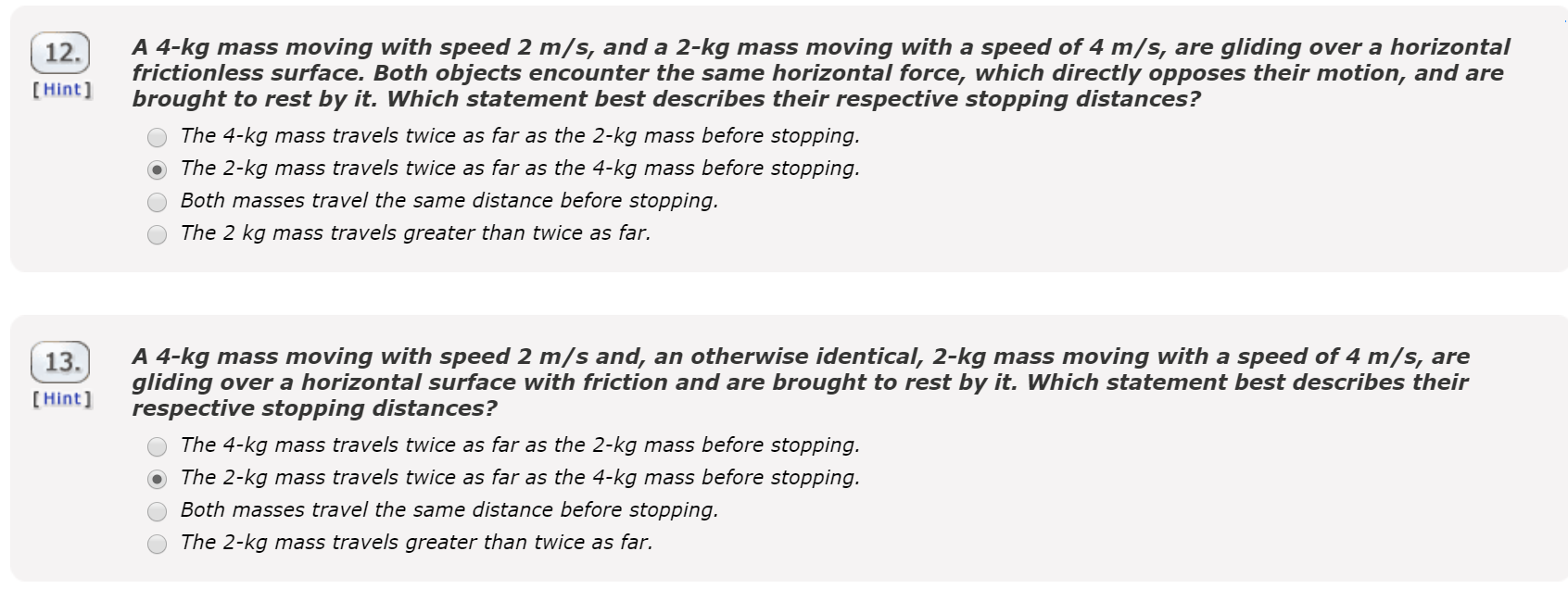So this is a conceptual question from Giancoli. It's not homework. I'm trying to understand whether I have an error in my way of thinking about this.
The problem is the following: two objects $a,b$ with $m_a=4 kg$ and $m_b=2 kg $ move with $v_a = 2 \frac{m}{s}$ and $v_b=4 \frac{m}{s}$ Now this yields that $b$ has twice the kinetic energy. The question then stated the following: What is the breaking distance of each one related to the other?
My reasoning is that $b$ has twice the kinetic Energy thus also has twice the breaking distance compared to $a$. However this is not correct.
The solution states this: "The 2-kg mass travels greater than twice as far."
This seems to contradict the Energy preservation? Why is my solution: "The 2-kg mass travels twice as far as the 4-kg mass before stopping." incorrect?

